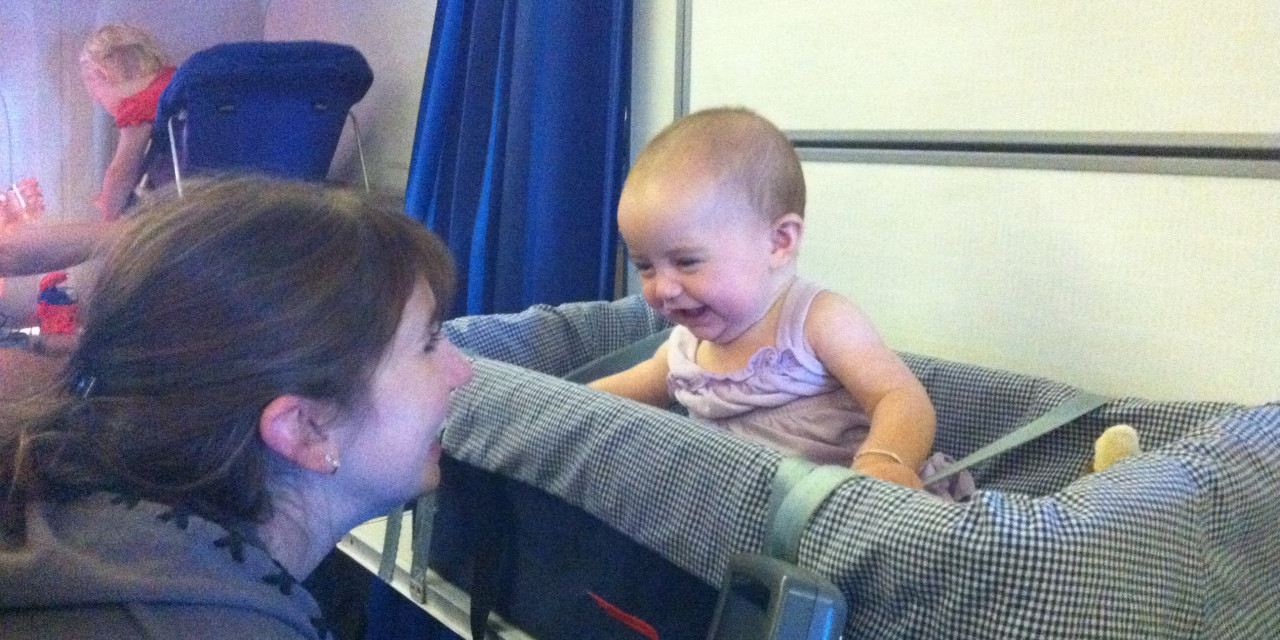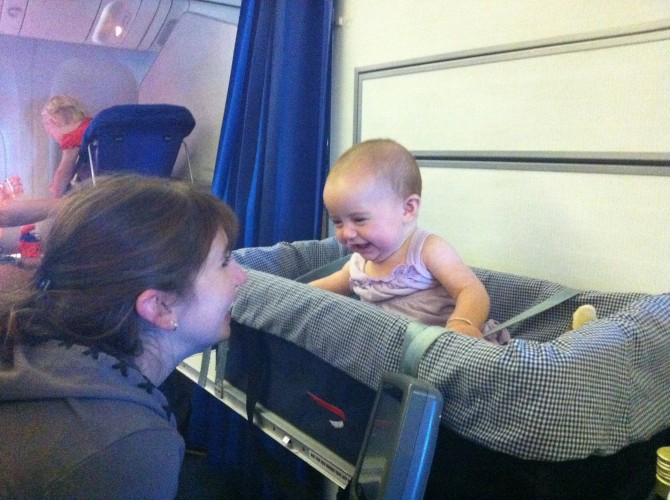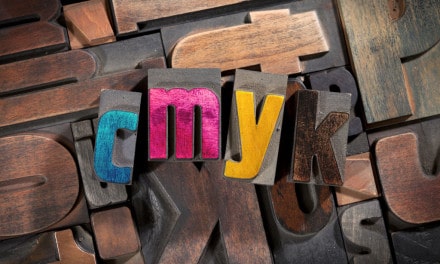I am sure there a thousand articles on traveling with babies and at least half that many on traveling with twins. But, in reality, there aren’t that many on traveling with twin babies. And beyond that, every situation is different. So, here’s mine.
In the past two weeks, I have taken my two twin daughters (6 months, 2 weeks old) on 6 different plane trips, totaling 26 hours in the air and going through 7 different airports. That’s more than a full day of flying. The trips ranged from an hour (shortest) to 11 hours (longest) with everything in between. Some flights were in the morning, some after lunch and one in the evening.
Here’s what I’ve learned:
If you are traveling with twins that are young enough to not require tickets (by making them “lap babies”) you will not be able to have both babies on the same row of seats.
The reason for this is that every seat has an emergency oxygen mask. And each row of seats has one extra oxygen mask. Because of this, no two babies are allowed to be on the same row—unless you have bought at least one of the babies a seat on the plane.
So for two parents traveling with twins, be prepared to sit in different rows. This was the case for 4 of our 6 trips.
And for a single parent traveling with twins, you must pay for at least one additional seat.
When we booked our tickets we weren’t informed of this and had in fact been told that there was no problem with us sitting together. This wasn’t the case for our first 11 hour flight and my wife had to raise a fuss with the airline, who then did a great job of getting us sitting together. How? They cleared 5 seats just for us! This had the great advantage of us being able to bring the car seats onto the plane, where the babies had their own seats.
All in all, if you have the money to buy a seat for your baby, it is worth it and will make the flight that much more comfortable. On the other hand, most airlines are helpful and if you only buy adult seats, they may go out of their way to help you if the plane isn’t full.
You can take as much baby food through security as you want (but can’t take regular ol’ milk)
Our twin girls go through about 4 or 5 bottles a day. That’s about 10 bottles, so we packed at least 12 so we’d be on the safe side. We use barley water mixed with milk and syrup rather than powdered formula. In order to get as much into our bags as possible, we kept quite a few bottles filled with barley and syrup (knowing we could get milk after the security check point).
As we were we running out the door this morning we grabbed the milk we had in the fridge so that we could mix up some formula on the way to the airport (an hour drive).
So here’s the full rundown of what happened at the security checkpoint (at Heathrow):
- We put everything on the conveyor. We had one bag designated to holding all of the baby milk.
- We put the baby carriage (with babies) through the metal detector. Both my wife and I then went through the metal detector.
- On the other side, we had to pick up each of the babies as two security officers rapidly scanned the babies and did a search of the baby carriage.
- All of the bottles were then pulled out of the bag and divided up by how they looked (either milky pink or transparent pink/brown–depending on whether or not we had mixed in the milk yet). A few of each colour were pulled from the lot and I had to taste each one.
All in all, going through security took less than 10 minutes. I had expected it to take longer.
At Heathrow, we were not able to take the milk we had brought through security and instead bought milk after going past the security checkpoint. In the US, milk is considered baby food and the TSA are not allowed the stop you from bringing it.
Make sure your baby is eating something when taking off and landing as the change in cabin pressure can hurt.
In preparation for our trip, both my wife and I had searched Google for what we could find in regards traveling with infants. The item which was most repeated in articles and blog posts was the fact that the change in cabin pressure could be quite painful to the baby.
On our first plane, the babies didn’t seem to notice the change in cabin pressure. Neither was drinking and neither raised a fuss. We thought we were in the clear and didn’t have to worry about it. Then on the next trip (a one hour flight from LA to San Jose) they did raise a fuss. We got them to drink their bottles and that settled them.
Then came the worst flight of all—the one hour return trip from San Jose to LA (that’s right, this one hour flight was worse than the 11 hour, 8 hour, 3 hour and 2 hour flights combined)—the babies were practically screeching the entire trip. We finally got them to settle by giving them small pieces of cucumber to suck on. Neither eats hard food so the change in texture and new taste coupled with eating got them to stop crying.
For the next flights we were prepared, having bought either a sandwich or cup of fruits for the take off. Then, during take off and landing, when the cabin pressure changes, we fed them small pieces of food that they could suck in their mouth. This helped a lot.
Baby cribs in the bulk head seats are great except when there is turbulence
Of the 6 planes we went on, only one had baby cribs on the bulk head seats. The first flight (11 hours) didn’t and when we asked out it, we were told that planes no longer had these.
It was only till our last flight (8 hour return) that we ran across them again. The plan we were on had baby cribs on the bulk head seats and this is where they seated parents with babies (which was great).
The advantage with these is that you can place your baby in the seat and they can sleep through the trip (especially if traveling during their regular sleep hours). The movement and ambient noise in the plane will help them sleep.
The disadvantage is that every time the pilot decides to put up the seat belt sign (due to turbulence) you have to take your baby out of the crib and put him/her on your lap. This can be really annoying if your baby is sleeping. It happened twice during our 8 hour flight.
People don’t hate travelers with babies.
Another oft repeated rant in other blog posts and articles about traveling with babies is that other passengers complain, give you a hard time or even just an eye of disdain.
I had in fact read an article recently about a survey done where 50% of British passengers wanted planes that were free of traveling children.
With that context, this was another concern I had about traveling. The reality, however, was that we really didn’t get a hard time for traveling with our babies. It may be that they are well behaved and it may be that this is a larger problem in the toddler years. But in our case, we received quite a few smiles and compliments and no complaints.
Other small details and points of interest
- Some airlines will let you board first if you have babies, some won’t. Southwest didn’t, British Airways did.
- Because our baby food is milk based, it goes bad out of a fridge. We had trouble with this on the first 11 hour flight so on the second long flight (8 hour return) we took a traveling cooler.
- Short flights don’t stock milk, so make sure you bring your own if you need it.
- You are not allowed back on a plane if you get off (to get something you forgot).
- You are not allowed back off a plane if you get on (to get additional luggage).
- Sucking on cucumber is good for change in cabin pressure
That’s about it. If I think of anything else, I’ll add to this article. And if anyone has a question, feel free to ask.









Way cool! Some very valid points! I appreciate you writing this article plus the rest of the website is very good.
Got it! Thanks a lot again for hlpenig me out!